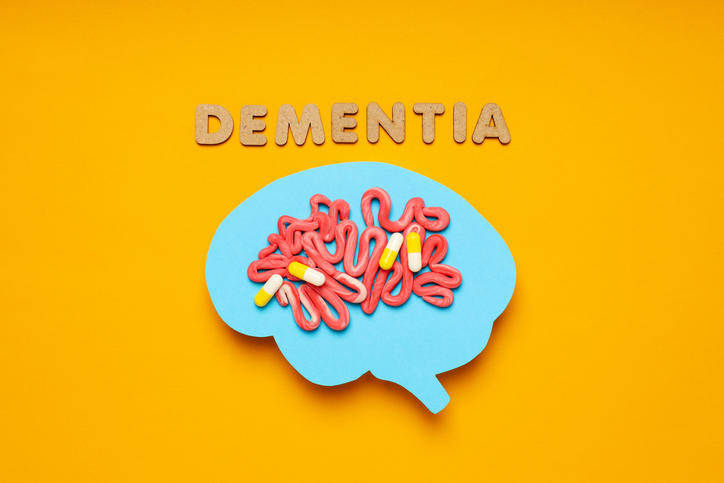
Brain Safe, an innovative smartphone app, is designed to help older patients avoid taking medications that may lead to dementia. This app serves to identify anticholinergics, a specific class of drugs that is linked to cognitive decline in older patients. These drugs treat a variety of conditions, including diarrhea, asthma, and sleep disorders, and are often used by elderly patients who are unaware of their potential side effects. Brain Safe offers a convenient solution to this conflict using mobile health technology.
Inspiration Behind Brain Safe
Two and a half years ago, a piece of paper that listed potentially unsafe medications for older patients was the only information available regarding anticholinergic drug risks. Viewing this flawed system, Regenstrief Institute researcher Richard Holden, Ph.D., envisioned a better system for informing patients of these risks.
“It didn’t help people understand what their personal risk was,” says Holden, speaking on the prior system. “It didn’t provide any education. It was just a list of things, and it didn’t help them take the next step.” Holden is also an Associate Professor at the Indiana University School of Medicine.
In one of Holden’s early studies regarding the issue at hand, 24 people who were using anticholinergic medications were evaluated for their knowledge of these drugs’ risks. After interviewing them, the researchers found that zero of the 24 knew what an anticholinergic drug was or what risks it presents for dementia.
In the latter portion of this research, the team set up a simulated pharmacy to evaluate how consumers make decisions in purchasing over-the-counter anticholinergic drugs. Holden found that a good number of consumers were purchasing anticholinergics for unnecessary reasons and unknowingly. For example, a participant would purchase Tylenol PM for pain rather than regular Tylenol not knowing that the former contained additional anticholinergic ingredients.
This research highlighted the need for improved education and assistance regarding anticholinergic drugs and their risks. With the elderly patient population in mind, Holden’s initial concept for reform was a booklet-type solution; however, he quickly realized there was stronger demand for a tech solution such as an app.
What is the Brain Safe App?
The primary goal of the app is to make older patients aware of the medications that may be contributing to dementia-related cognitive decline. It is designed to not only help them learn more about these medications and their risks, but to start conversations with their physicians about them as well.
“It provides education, information, a personalized risk score for people to know what the impact of their medication is on them, and then finally, it provides what we call the conversation starter,” explains Holden.
This conversation-starting feature takes the form of a unique report based on the medications that the patient is taking. It also provides “forecasts”, which tell both the patient and physician what the risks are of using versus switching anticholinergic medications. This report includes what Holden describes as a “cross-tapering schedule” as well.
 “Think of two columns, Column A, Column B. A is your current medication and B is an alternative treatment,” he says. “So you might start with 50 milligrams of one and zero of the other. Next time, you’ll have 25 of one, 25 of the other. And the next time, it’ll be zero of the original medication, 50 of the other. So you’re kind of weaning down and then weaning up on two different medications.”
“Think of two columns, Column A, Column B. A is your current medication and B is an alternative treatment,” he says. “So you might start with 50 milligrams of one and zero of the other. Next time, you’ll have 25 of one, 25 of the other. And the next time, it’ll be zero of the original medication, 50 of the other. So you’re kind of weaning down and then weaning up on two different medications.”
Holden notes that this tool is especially useful for the physician in creating tapered schedules to avoid withdrawal when switching their patients’ medications. This detailed report gives the physician information regarding their patient’s medication risks and leaves room for them to make their own judgment of how changes in medications will manifest clinical symptoms.
“One of the things that Brain Safe does is it helps to structure that conversation so that there’s things in front of you that, as a patient and as a physician, you can work off of,” says Holden.
To make the app function, each anticholinergic medication in Brain Safe’s database is entered with its correlated risk based on the anticholinergic burden scale. These medications have a risk score of one, two or three, which gets put into a formula that accounts for age, gender, and other risk factors to generate the patient’s risk for cognitive decline.
Anticholinergic Drugs and their Side Effects
Anticholinergic drugs function by inhibiting the action of acetylcholine, a neurotransmitter with a wide variety of functions in the body. Though these drugs have many clinical applications, they are strongly correlated with dementia risk, brain atrophy and dysfunction, and other adverse effects on cognitive and physical function. Holden was a co-author of a recent JAMA Internal Medicine commentary about the need for interventions to address the repeated finding that anticholinergic drug use may be increasing rates of Alzheimer’s disease and related dementias. These research findings have landed anticholinergic drugs on the Beers list, a collection of medications that are potentially inappropriate for elderly patients.
Holden notes that cessation of anticholinergic drug use is particularly challenging, being that their use applies to a variety of different conditions. He names urinary incontinence, anxiety, depression, schizophrenia, allergies and sleep issues as just a few of the conditions that these drugs are used to treat. Though many of these drugs are prescription medications, there are plenty of over-the-counter anticholinergics available as well.
Diphenhydramine, under brand names such as Benadryl, is a commonly used allergy medication that falls under this class. It is also added to medications like Tylenol and Robitussin to form their “PM” versions. Unisom (doxylamine) is another common over-the-counter anticholinergic sold as a sleep medication.
“For the over-the-counter [drugs], the most typical use is something for sleep or something for allergies,” says Holden. “It’s added to other medications to kind of make it a PM medication. For prescription, it’s a variety of different conditions.”
Holden explains that stopping use of these medications can result in the onset of undesired symptoms. In many cases, however, patients are taking medications that aren’t truly providing relief. For example, he claims that anticholinergic depression medications can often have little effect in older patients and that terminating treatments that are not effective could reduce the negative effects of anticholinergic drugs.
In addition to having your symptoms potentially come back, stopping treatment can result in withdrawal as well. This is why Brain Safe focuses on replacing medications and tapering on/off of them to minimize withdrawal symptoms as much as possible.
“We really think that it’s important to get people to talk to their physician and pharmacist rather than do things on their own,” he says, highlighting the importance of consulting with a professional prior to changing treatment regimens.
He also explained that these drugs are often prescribed to treat symptoms out of convenience. For instance, if a patient has trouble sleeping due to pain, a physician may prescribe an anticholinergic to help them sleep. Though this solves the sleeping problem, it circumvents the underlying issue of pain. Holden explains that though it would be best to address the pain that is causing the sleep issues, it is often easier to prescribe the patient an anticholinergic in the short duration of a visit to the doctor.
What the Future Holds for the App
Just last month, the National Institute on Aging agreed to fund a $3.5 million, five-year study to evaluate the effectiveness of Brain Safe. This randomized control trial will recruit 700 participants from multiple health systems in Indiana who will be randomized to either receive intervention via Brain Safe or to be in the control group. Those in the intervention group will receive the app and monthly reminders to use it.
The primary goal of the study is to measure the app users’ exposure to anticholinergic drugs compared to the control group. Drug intake will be evaluated at baseline and 12 months, with several measurements being taken between as well.
“Our big question is, ‘Will that exposure to anticholinergics differ from baseline to 12 months out between those who are receiving Brain Safe versus those in the control condition?’” says Holden.
The secondary question of this work is whether the Brain Safe users display a difference in cognitive function. This will also be evaluated at baseline and 12 months via various cognitive tests. The team hypothesizes that those using the app will display lower anticholinergic use and negative outcomes, and improved cognition and overall quality of life as well.
The recruitment process for this large-scale study will be done over a 42-month span and is set to begin this October. Each participant will receive the intervention for 12 months.
As for a release of Brain Safe to the general public, Holden feels that more supporting data is needed first. He believes that this 700-participant study will provide results that advocate for the app’s use and although it could be released today with the press of a button, he’d rather wait to release an app of confirmed high quality.
“There are tradeoffs of releasing something that you’re not sure of,” he explains. “The point of the study is to see if this technology works and actually has the desired effects of improving cognition. We hate the idea of putting something out there that’s not tested or proven, which a lot of other apps do.”







 © 2025 Mashup Media, LLC, a Formedics Property. All Rights Reserved.
© 2025 Mashup Media, LLC, a Formedics Property. All Rights Reserved.